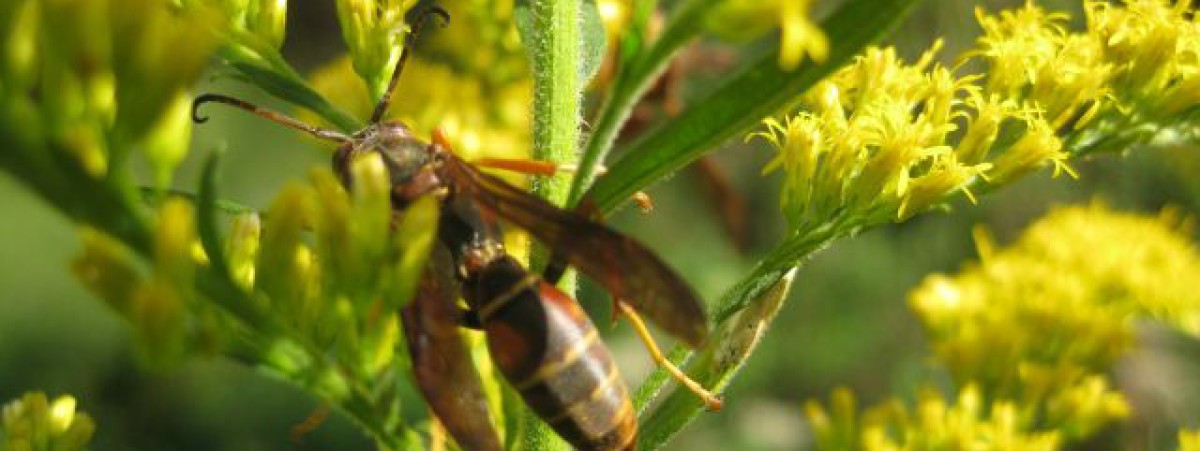In y’days post I outlined the dilemma with Randa, the flying hen who established a nest beyond the pale (paddock) and my provisional decision to leave her there and let nature take its course. Well my better half prevailed with the argument that once we take on pets (or chicken since they are not pets in our case) we assume responsibility for them and when we have domesticated them (select bred for egg productivity) they lose their instincts to survive in the wild. Ergo, we could not leave little Randa on her nest and should bring Randa and her eggs under our protection. A counter argument is that if she could survive for 10+ days out there she was perhaps not as vulnerable as we thought.
So, armed with secateurs to cut through the brambles and leather gloves I approached her hideout.
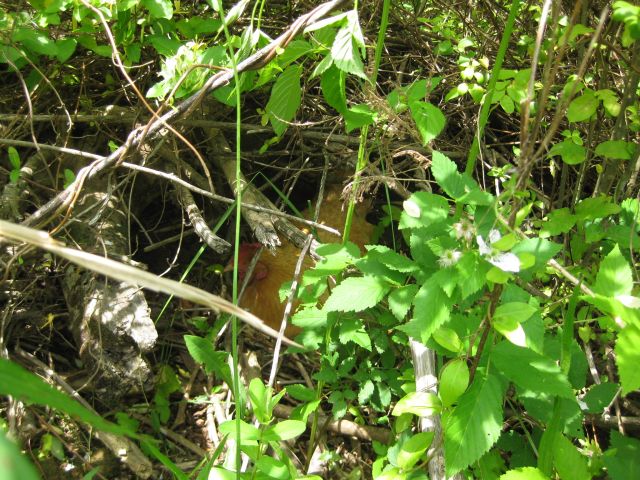
To my surprise she showed little reaction – did not hightail into the bush as I thought she would, and only protested as I reached out to hold her. I transferred her to a spare coop where she made a lot of noise to the chicken spectators looking in. Then I located a plastic container filled it with pine shavings and transferred the eggs from the nest. How many eggs were there?
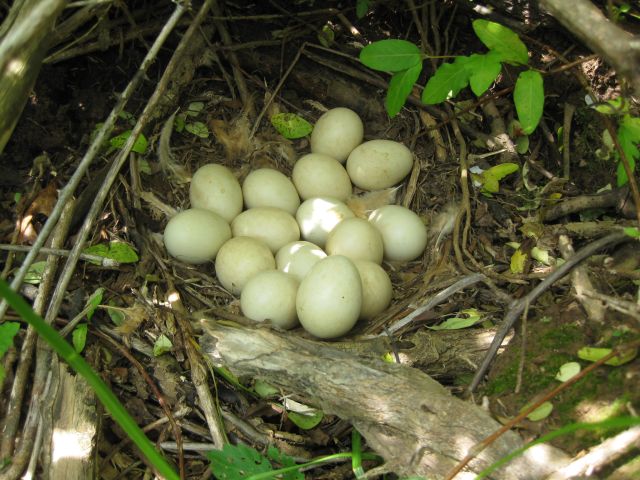
15 eggs! Wow this means she was accumulating eggs for the past 15 days. She had been awol for 13 days so probably the 1st 2 she laid she did not sit on consistently. Now here is a question – how many of these eggs are fertile. If the rooster did not have contact with her during the 13 days she was gone will the eggs she produced during that period be fertile? Bad news for me – apparently the rooster’s sperm can remain viable in the hen for 3 weeks so it is possible that all her eggs could have been fertilized.
After I removed Randa and her eggs I took a pic of her nest, which is shipshape and furnished with some feathers.
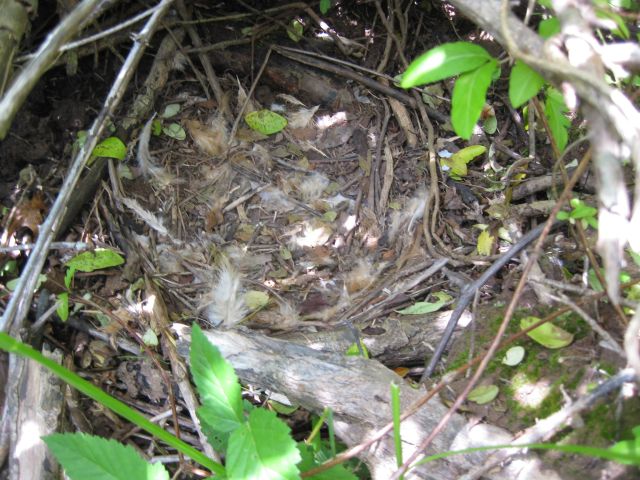
I introduced Randa to the blue plastic container which held the pine shavings and her eggs. She was not happy.
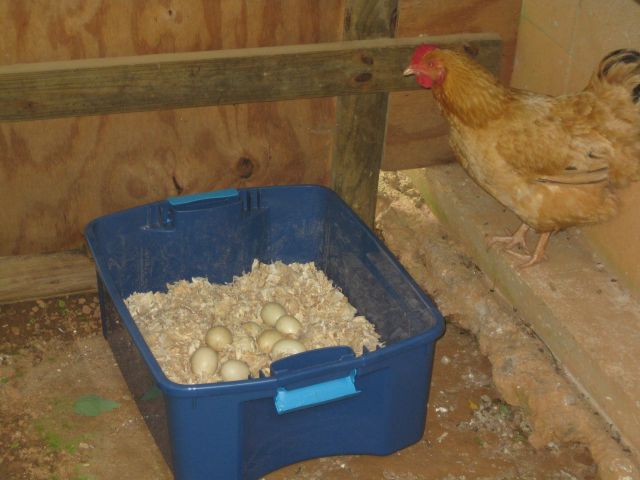
Perhaps the blue color was offputting, or the sides were too high or it was just too synthetic. So I decided to use a low rimmed cardboard box placed on a thick rubber mat to protect it from the damp in the soil. And I placed the aggrieved Randa on the new nest and stroked her for some time and then stepped back and she stayed put.
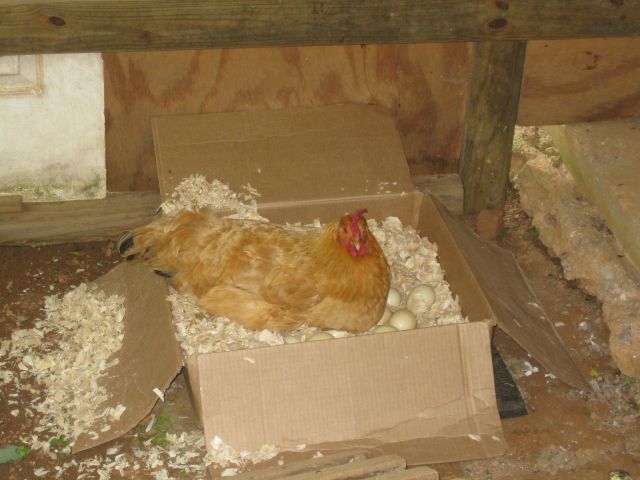
So for the moment there is peace. But I have a looming dilemma – if a lot of eggs hatch viably what will I do with them?
